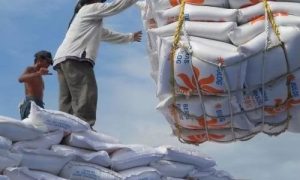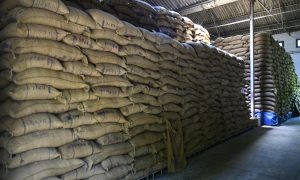India’s rice planting gap narrows as monsoon rains pick up

By Mayank Bhardwaj
NEW DELHI, July 14 (Reuters) – Indian farmers have planted 12.3 million hectares with summer-sown rice so far, farm ministry data showed on Friday, down 6.10% year-on-year, narrowing the sowing gap estimates from the previous week as crucial monsoon rains revived in July.
Farmers typically start planting rice, corn, cotton, soybeans, sugarcane and peanuts, among other crops, from June 1, when monsoon rains are expected to lash India. Sowing usually lasts until July.
Summer rains are crucial as nearly half of India’s farmland lacks irrigation.
India received 10% below normal rains in June, but in some states, the rainfall deficit was as much as 60% below average.
The India Meteorological Department defines average, or normal, rainfall as ranging between 96% and 104% of a 50-year average of 87 cm (35 inches) for the four-month season.
India’s weather office has forecast an average amount of rain in July despite the likely emergence of the El Nino weather pattern.
July rainfall is crucial as it accounts for most of the precipitation for the four-month-long monsoon season.
This year, the delayed arrival of monsoon rains and lower rainfall in some southern, eastern and central states held back the planting of summer crops even as the monsoon covered the entire country nearly a week in advance.
The Ministry of Agriculture & Farmers’ Welfare will keep updating the provisional sowing figures as it gathers more information from state governments.
The planting figures are also subject to revision depending on the progress of the June to September monsoon season.
Some regions in India, including breadbasket states such as Punjab and Haryana, have received torrential rains in July, triggering floods. Still, dry weather conditions prevail in some parts of the country.
Farmers planted 11.4 million hectares with oilseeds, including soybeans, 10.23% less than a year earlier. Corn was planted on 4.4 million hectares, down 4.34%. The cotton area was down 5% to 9.5 million hectares.
(Reporting by Mayank Bhardwaj; Editing by Jan Harvey)
((mayank.bhardwaj@thomsonreuters.com; +91-11-4954 8030; Twitter: @MayankBhardwaj9; Reuters Messaging: mayank.bhardwaj.thomsonreuters.com@reuters.net))













